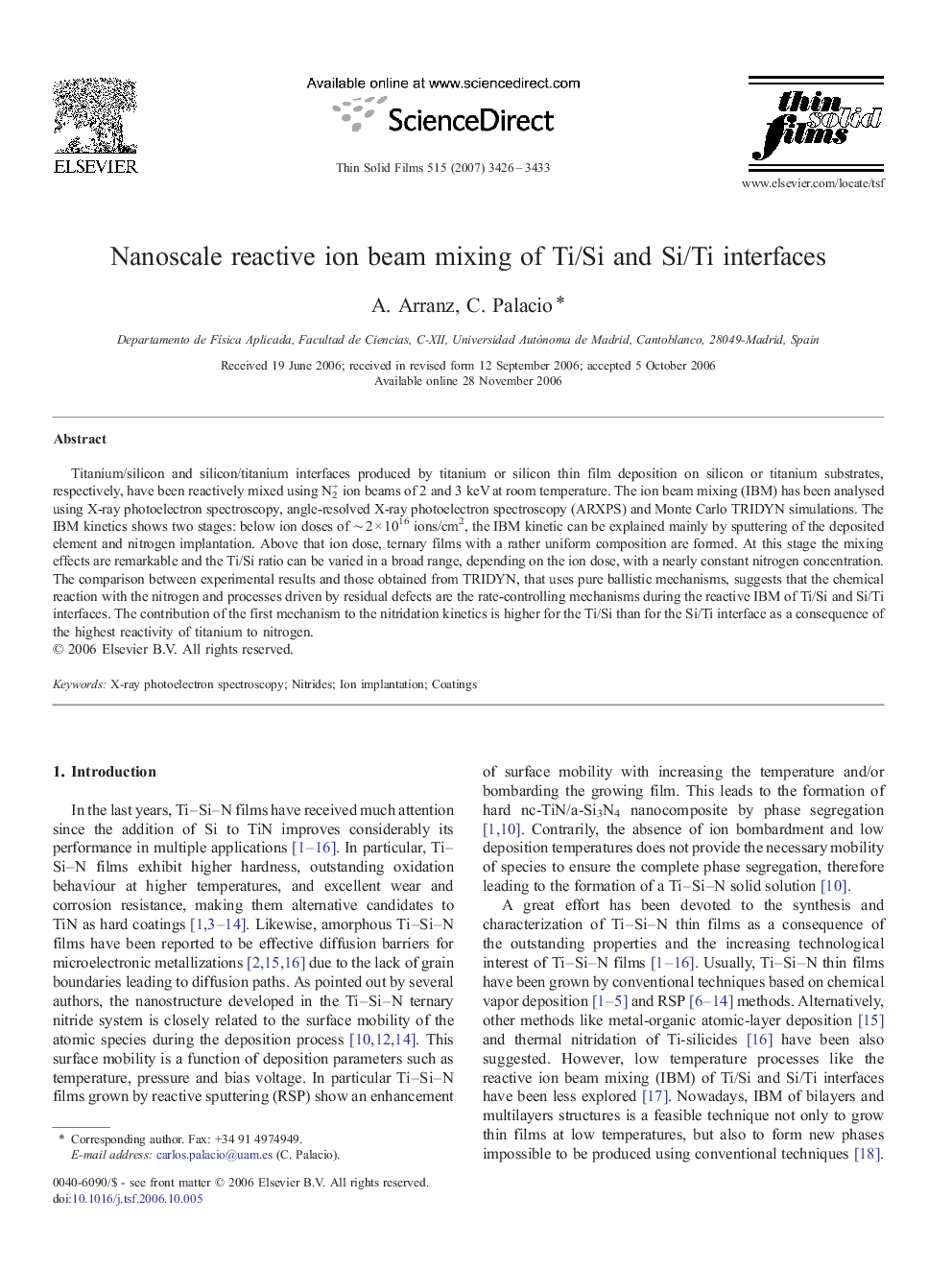| Article ID | Journal | Published Year | Pages | File Type |
|---|---|---|---|---|
| 1672972 | Thin Solid Films | 2007 | 8 Pages |
Titanium/silicon and silicon/titanium interfaces produced by titanium or silicon thin film deposition on silicon or titanium substrates, respectively, have been reactively mixed using N2+ ion beams of 2 and 3 keV at room temperature. The ion beam mixing (IBM) has been analysed using X-ray photoelectron spectroscopy, angle-resolved X-ray photoelectron spectroscopy (ARXPS) and Monte Carlo TRIDYN simulations. The IBM kinetics shows two stages: below ion doses of ∼ 2 × 1016 ions/cm2, the IBM kinetic can be explained mainly by sputtering of the deposited element and nitrogen implantation. Above that ion dose, ternary films with a rather uniform composition are formed. At this stage the mixing effects are remarkable and the Ti/Si ratio can be varied in a broad range, depending on the ion dose, with a nearly constant nitrogen concentration. The comparison between experimental results and those obtained from TRIDYN, that uses pure ballistic mechanisms, suggests that the chemical reaction with the nitrogen and processes driven by residual defects are the rate-controlling mechanisms during the reactive IBM of Ti/Si and Si/Ti interfaces. The contribution of the first mechanism to the nitridation kinetics is higher for the Ti/Si than for the Si/Ti interface as a consequence of the highest reactivity of titanium to nitrogen.
